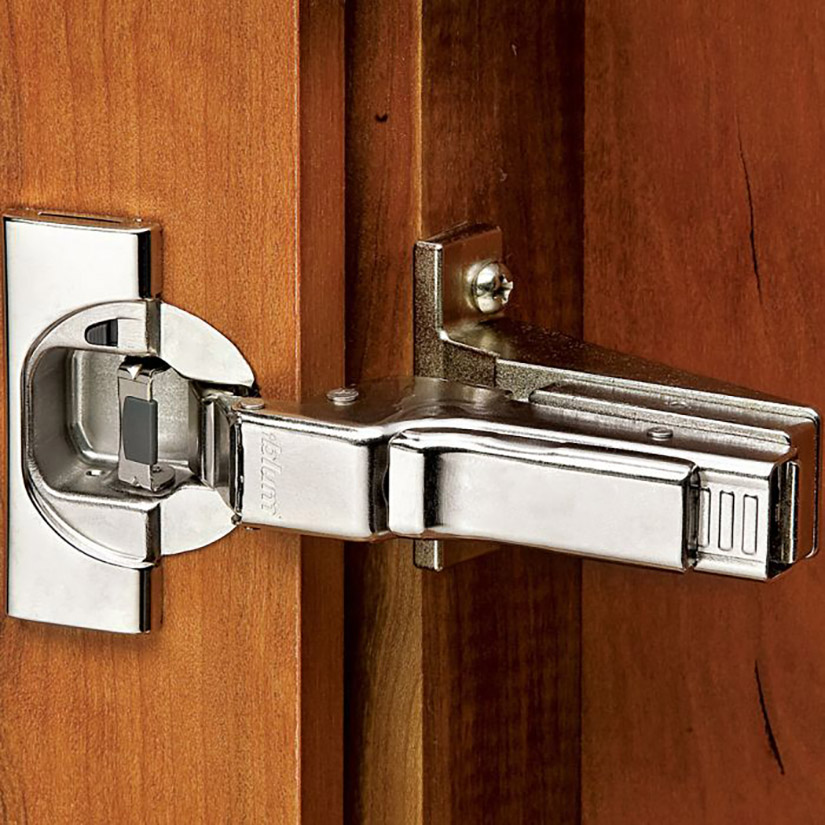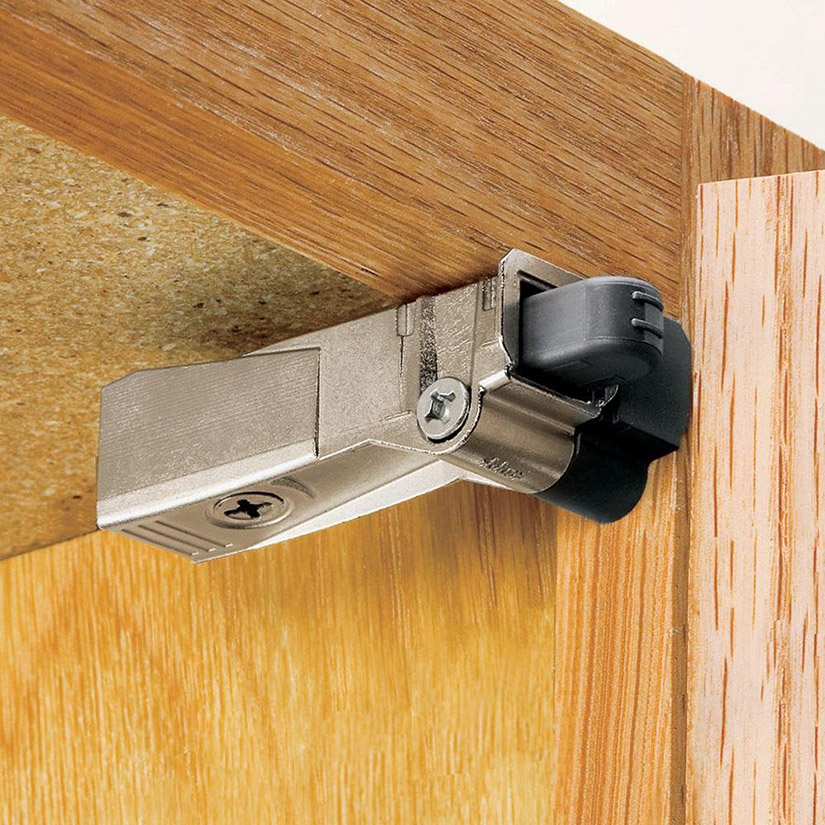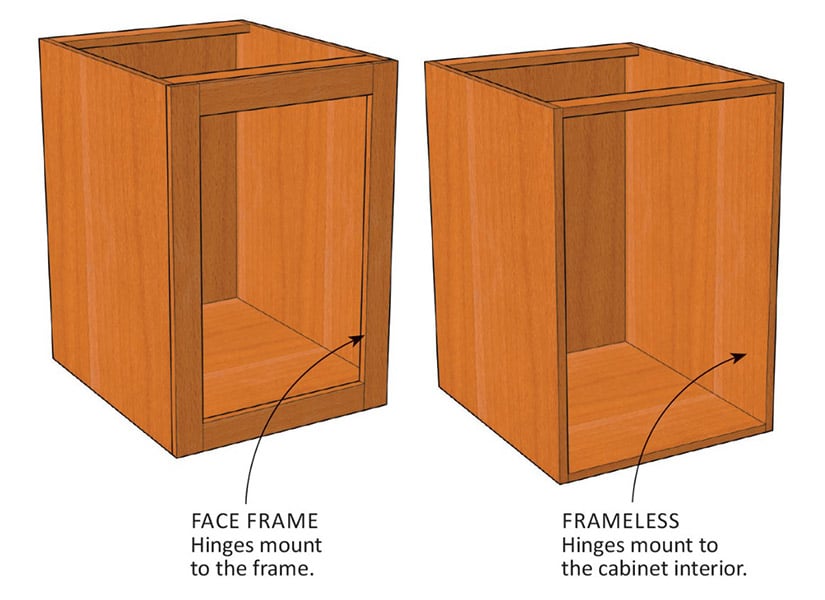kitchen tips
Why You Need Soft Close Cabinets (Doors & Drawers) In Your Life
When it’s time for that midnight snack, soft-close cabinets make it easy to grab a plate without waking the whole house up. But this genius invention might turn you into a door-slammer when you visit someone else’s kitchen.
Let’s get into the details of soft-close cabinets and how you can upgrade your cabinets yourself.
What Are Soft-Close Cabinets?

Soft-close cabinets use a special type of hinge system that slows the cabinet door as it’s closed. Doors with soft-close hinges will never slam shut.
If you’ve never tried soft-close cabinets, it can be a strange feeling, at first. You don’t have to be careful about slamming cabinet doors. You just have to get the door started and it will softly close on its own. You can even try to close it with some force and it won’t slam.
Soft-close cabinets are all about convenience. If your hands are full with plates to set the table, you can just nudge the door shut. You don’t have to set the plates down and reach up a second time just to close the door.
How Soft-Close Cabinets Work

Soft-close cabinet hinges were first popularized by a European company called Blum. The company’s Blumotion hinge is in millions of cabinets around the world and uses a hydraulic system to slow the motion of a cabinet door.
When the door is closed, fluid is forced around a piston, which provides resistance. If the door is shut harder, the resistance from the fluid is also greater. You’d have to have superhuman strength to actually slam a cabinet door that has a Blumotion or similar style hinge.
The soft-close feature has definitely solved a problem in modern life. But there’s something you need to be aware of. If you get soft-close cabinets, you’ll quickly get used to them. You might run down your kitchen and slam every cabinet shut just for fun. Of course, the cabinets won’t actually slam but they will softly close.
However, you need to be careful when you go home to visit mom. If she hasn’t made the upgrade, you might accidentally slam her cabinet doors. We can tell you from experience that it’s very unpleasant to slam a door without meaning to.
Soft-Close Drawers
Cabinets and drawers can both use soft-close designs to avoid the slamming-shut problem. Soft-close drawer slides use a hydraulic chamber similar to soft-close cabinet hardware.
These soft-close slides are mounted under the drawer, though some manufacturers make modified side-mount slides. Going from a standard side-mount slide to an undermount slide usually requires you to replace the whole drawer since the undermount slide is routed directly in the bottom of the drawer.
The Difference Between Soft-Close And Self-Close

Self-close cabinet hinges have springs that actually pull the cabinet door shut once it reaches a certain point. Most soft-close hinges are also self-close, but not all self-close hinges are soft-close.
Self-close drawers and doors can still slam shut. To get around that problem, you can add soft-close functionality to a door with a small damper.
Making The Upgrade Yourself
If you don’t have soft-close cabinets at the moment, there are a few ways you can add them to your life. First, you have to find out which type of cabinets you have in your kitchen.
There are two main styles of kitchen cabinet construction?face frame cabinets, which are traditional in the U.S., and frameless cabinets, which are also known as Euro-style. Below is a diagram from Woodcraft Magazine that shows the difference between these two types.

A face frame cabinet has all six sides of a rectangular prism: top, bottom, left, right, back, and front. The front is basically like a picture frame. In this style of cabinet, the frame is usually made of sturdier wood than the sides. The cabinet hinges mount to the edge of the frame in this scenario.
In a frameless design, there is no front to the box besides the door. So, there’s one less side to the rectangular prism. The door is mounted directly to the side of the cabinet, so the side pieces have to be thicker and stronger.
You can find soft close hinges for both frameless and face frame cabinets from any home improvement store. You can expect to pay between $5 to $10 per hinge. Once installed, most soft close hinges let you adjust the height, depth, and side-to-side position of the cabinet door.
If you don’t want to replace your cabinet hinges, you can also install a small piston or damper. This device slows the close of the door once it’s about an inch away. While they are adjustable, they work best on self-closing doors. If your door doesn’t close on its own, the plunger might keep it from closing.
![See your dream kitchen in 3D [GET YOUR FREE DESIGN]](https://cdn.kitchencabinetkings.com/blog/wp-content/uploads/see-your-dream-kitchen-in-3d.webp)
![Contractor Discount Program: Offering contractors and builders special volume discounts on all applicable orders [LEARN MORE]](https://cdn.kitchencabinetkings.com/blog/wp-content/uploads/contractor-discount-program.webp)
![Explore our photo gallery [GET INSPIRED]](https://cdn.kitchencabinetkings.com/blog/wp-content/uploads/explore-our-photo-gallery.webp)
![What everyone is saying about KCK [READ REVIEWS]](https://cdn.kitchencabinetkings.com/blog/wp-content/uploads/what-everyone-is-saying-about-kck.webp)
![Get a cabinet sample [SHOP SAMPLES]](https://cdn.kitchencabinetkings.com/blog/wp-content/uploads/get-a-cabinet-sample.webp)
![Pay over time, on your terms with Affirm [LEARN MORE]](https://cdn.kitchencabinetkings.com/blog/wp-content/uploads/pay-over-time-on-your-terms-with-affirm.webp)
Useful information. Inclusive, and obviously informative.
Thanks.